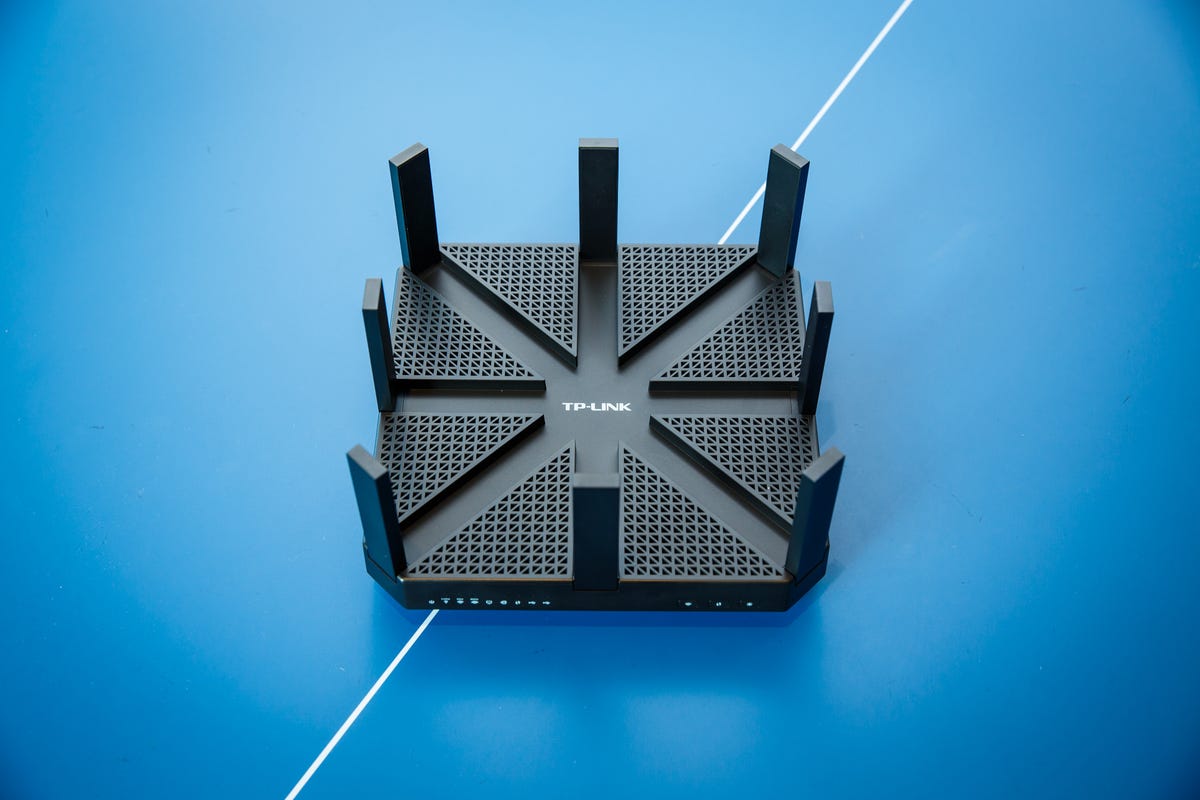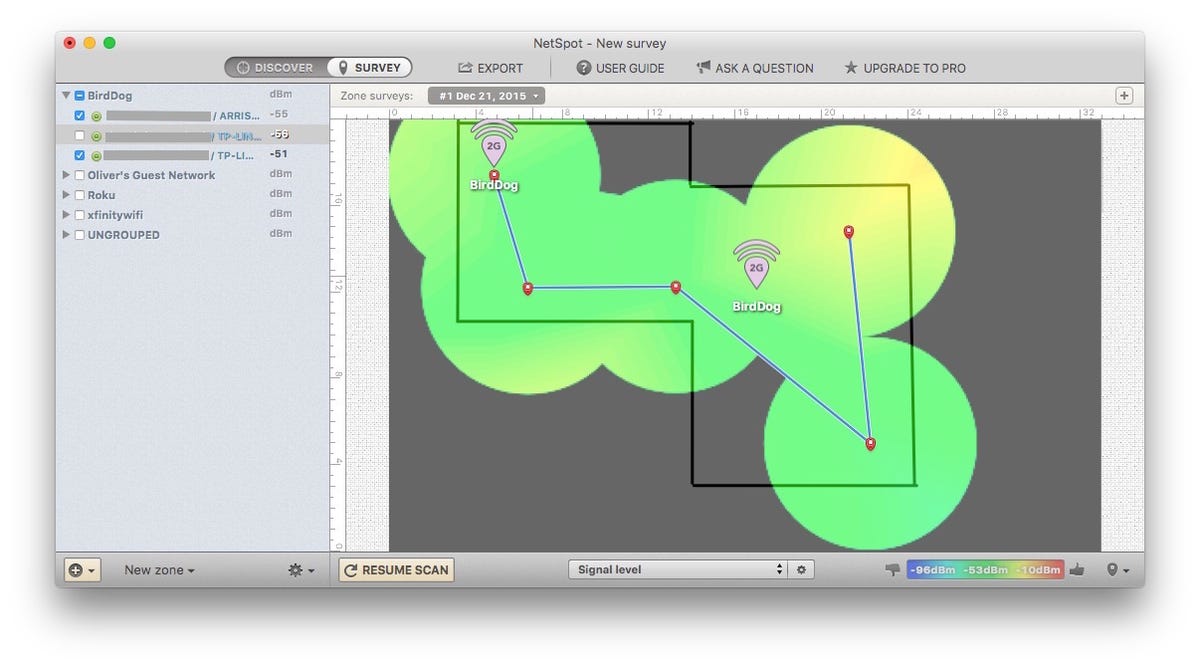There’s nothing worse than slow Wi-Fi when you’re trying to watch the Olympics via streaming. You need fast internet for pretty much everything: working from home, installing smart home gadgets or just unwinding with some Netflix at the end of the day. If your connection always seems to be unstable, regardless of what internet service provider you have or how many devices are connected, there’s a simple way to optimize your Wi-Fi network that only takes a few minutes.
There are a lot of factors that determine internet speeds, and while there are a few tricks or guidelines you can follow to improve the overall wireless speeds and coverage in your home, one of the most crucial factors is the location of your router. And the best place is not always where the technician sets it up.
So whether you’re hosting a viewing party or watching The Eras Tour (Taylor’s Version) on a loop, keep reading to learn about the best place in your home for your router and other tricks for faster Wi-Fi. You can also check out our picks for the best Wi-Fi 6 routers, the best mesh routers and the best Wi-Fi extenders. (If you have a mesh router, check out our guide for where and how to set that up correctly too.)
Read more: T-Mobile Home Internet Review
Choose the right router for your space
First things first: It all starts with choosing the right router or other equipment. Not all routers are the same and the size and layout of your home will determine what type of wireless network you need.
For most apartments and smaller homes (under 1,500 square feet), a single wireless access point should suffice. That said, if your router is several years old, you may want to consider upgrading to a newer model with support for 802.11ax, or Wi-Fi 6. That’s the latest generation of Wi-Fi technology, and it’ll give you the fastest wireless speeds possible and the best overall coverage.

For bigger, multilevel homes, it’s worth considering making the upgrade to a mesh network to offer consistent coverage throughout the entire house. Once the main access point is installed, if you find that a far corner of your home doesn’t have solid wireless coverage, just add another node to that area. Problem solved.
To learn more, check out our list of the best mesh routers of the year (our top pick is the TP-Link Deco W7200, which is currently priced at $199 at Walmart). If you need some additional guidance, consult our router buying guide.
It’s worth noting that where you place the primary access point still matters, regardless of whether you have a single access point or a mesh network.
OK, so what’s the best place to put your router?

Check out all the different routers available to you: Wi-Fi routers, mesh networks and more.
When you first move into a new home or apartment, the modem is usually installed along the wall in one of the far reaches of the house. This is simply because that’s where the line comes into the house and the technician’s job is to set up the connection — not optimize your network. That part is on you.
It’s tempting to just leave everything where the technician set it up. But it’s unlikely that this is an optimal location to have your router.
Choose a central location
Routers send the signal out in all directions, so if it’s left in the corner of your home, a significant percentage of your wireless coverage is being sent outside your home. That’s why your best bet is to move the router to a central location to optimize the signal.
Installing a router across the house from the modem may prove troublesome. It may require manually running an especially long Ethernet cable under the floor or along the bottom of your walls or enlisting the help of power line network adapters, which use your home’s electrical wiring to pass an internet signal from point to point. But the improved wireless coverage will be worth it. CNET’s Hallie Seltzer uncovered how effective cables can be when she tested Wi-Fi vs. Ethernet speeds at her home.
Raise the router
Routers tend to spread their strongest signals downward, so it’s best to mount the router as high as possible to maximize coverage. Try placing it high on a bookshelf or mounting it on the wall in an inconspicuous place.
Search online, and you’ll find lots of custom wall mounts built for specific routers, like this stick-up mount for the Eero Pro 6 mesh router. If you’re struggling to find a good, elevated spot, something like that could be a great solution.
Avoid other electronics
Try to pick a location that’s away from other electronics and large metal objects. The more walls, large obstructions and electronics near your router, the higher the chances are that something will interfere with the signal.
One type of electronic device to especially avoid is the microwave, which emits a strong signal in the 2.4GHz band, the same wireless band your router operates in. You’ll also want to be careful not to stick your router behind a large TV, which can cause electronic interference while also physically blocking or disrupting the signal.
Along with electronics, keep an eye out for bulky furniture and the like that might be limiting the signal’s reach. Wi-Fi doesn’t travel well through water, for instance, so if you have an aquarium in your home, try to avoid situations where it’ll be in between your router and the device that needs to connect.
Those weird antennas do actually matter
Some routers have no antennas at all, but some have up to eight. These antennas help direct the signal. If there are two or more antennas on your router, don’t position them all in the same direction.
Instead, make them perpendicular to one another — position one horizontally and the other vertically. Or slightly change the position of all the antennas to cover a wide range of angles. You might have to experiment a bit to find the most effective configuration.
The signal from each of those antennas will come out like a wave traveling in all directions, and that wave will be perpendicular to the antenna itself, so a vertical antenna is going to be more helpful in single story homes, while a horizontal or angled antenna is going to put out a signal that travels upward, which might be more useful in a multistory home.

Wi-Fi mapping software like NetSpot can help you visualize the strength of your network, making it easier to address the weak spots.
Map your signal
In worst-case scenario situations, it may prove useful to map out the signal in your home to see where there might be gaps or problem areas in your coverage. Several years ago, we used the NetSpot software to map out the signal strength throughout the CNET Smart Home — in the end, we got a great look at the weak spots in our Wi-Fi network, which helped us shore things up by moving our hardware to more optimal locations.
If you’re considering upgrading your router, be sure to check out CNET’s picks for best routers. For homes with children, make sure to explore the parental controls of your router, too.




















+ There are no comments
Add yours